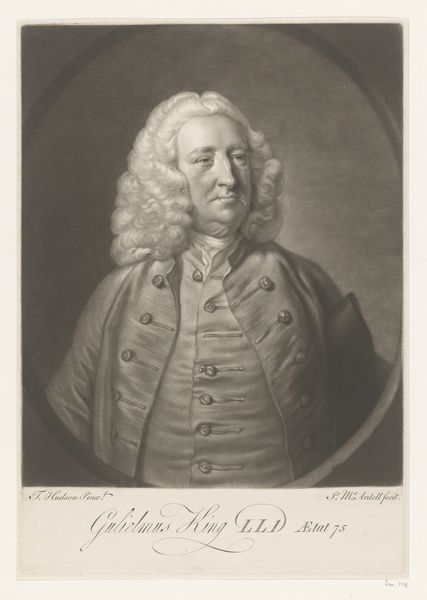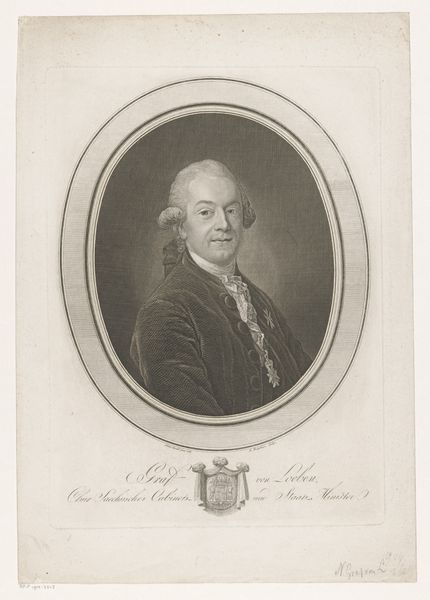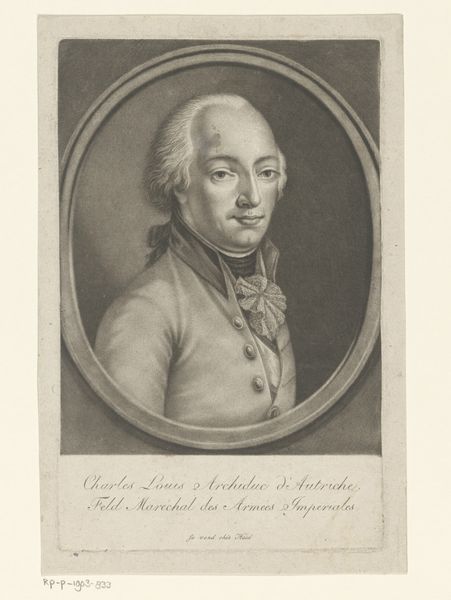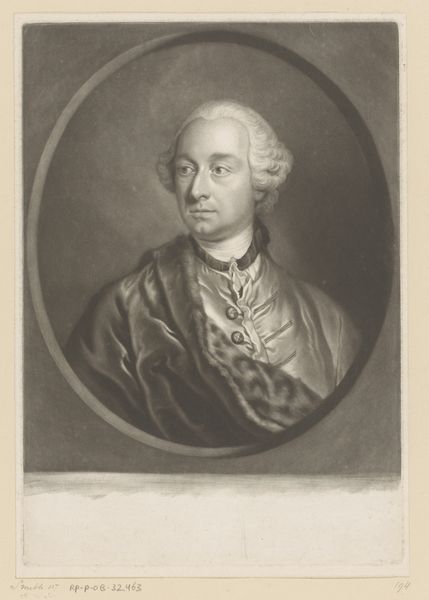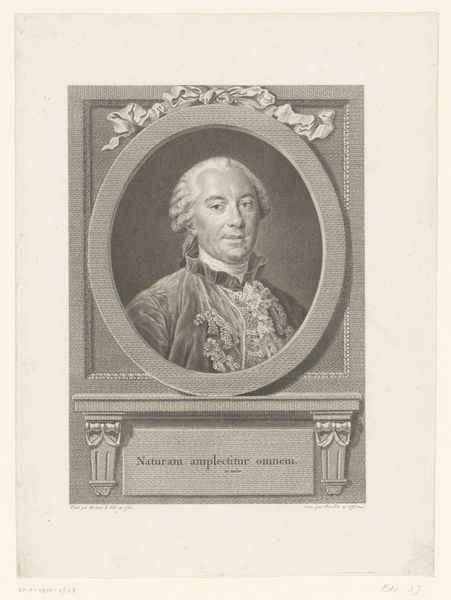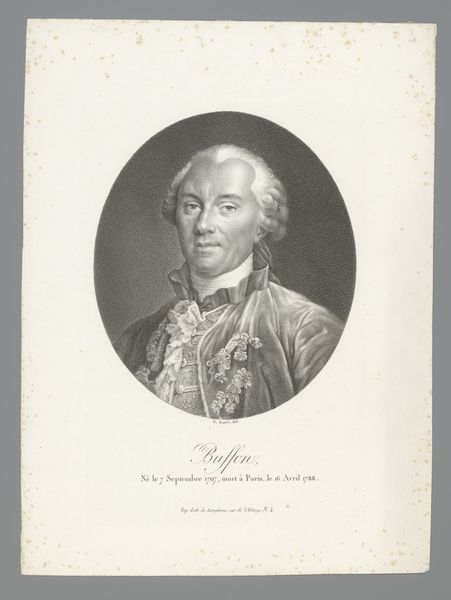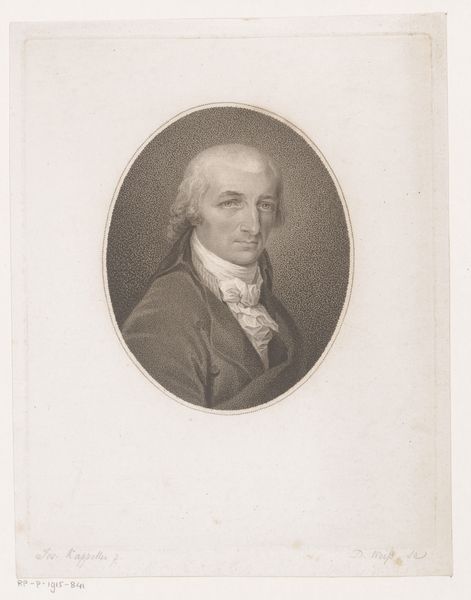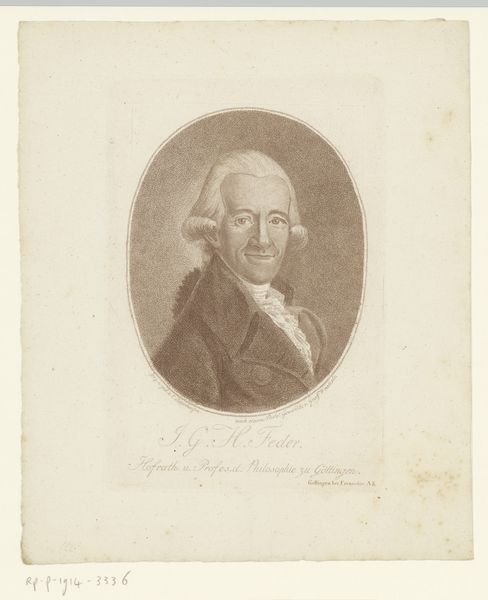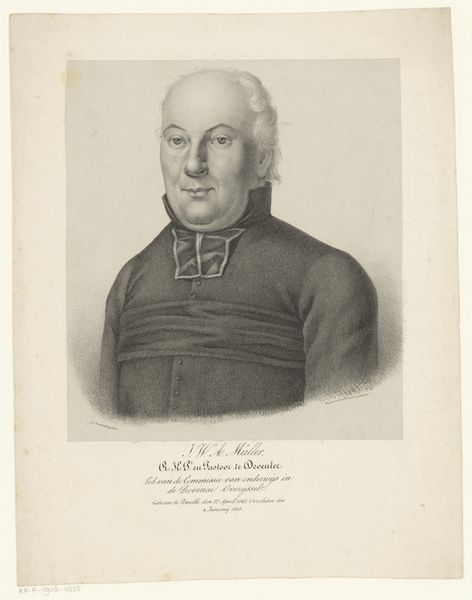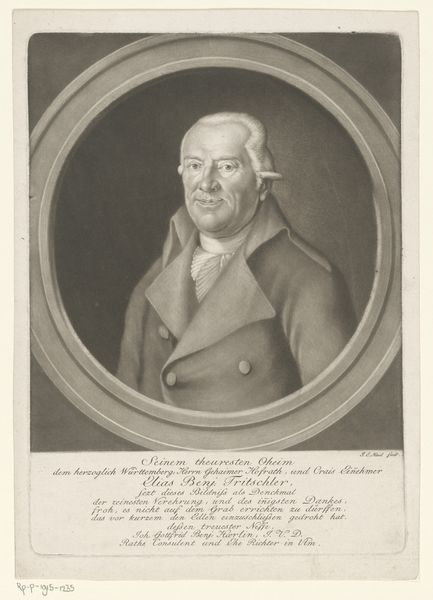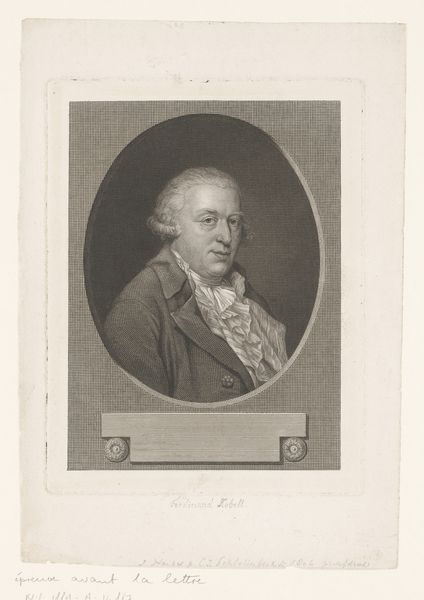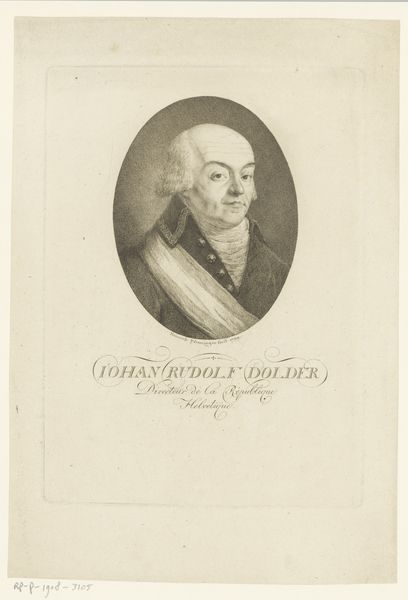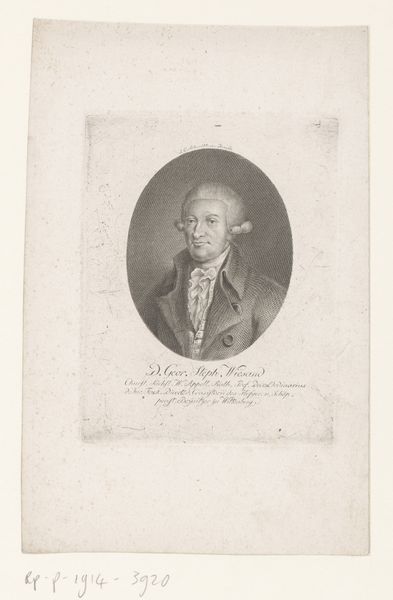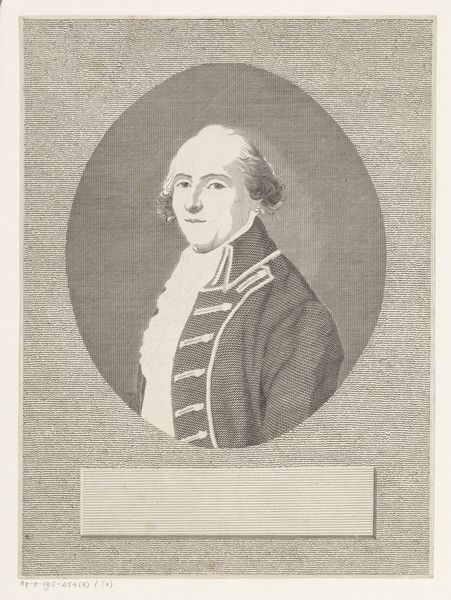
Dimensions: height 384 mm, width 307 mm
Copyright: Rijks Museum: Open Domain
Editor: This is Henriëtte Félicité Tassaert’s 1788 engraving, "Portrait of Jean Pierre Antoine Tassaert." The muted tones give it a somewhat reserved feeling. I’m curious about the circular framing. What do you see in this piece? Curator: The composition, enclosed within that oval, immediately draws attention to the meticulous gradations of light and shadow across Tassaert’s face. Notice how the artist uses a sophisticated hatching technique to create a sense of depth and volume. The details in his clothing – those perfectly round buttons, for instance – serve to subtly offset the organic form of the portrait. Editor: So you're saying that contrast between the rigid and the fluid enhances the visual interest? Curator: Precisely. Consider how the engraver uses the restricted grayscale palette. Each tonal shift signifies a spatial shift, drawing the viewer into a world of three dimensions. Editor: It's interesting how the lack of color focuses our attention on texture and form. The line work seems particularly important here, and almost takes the place of color, defining everything from clothing, hair and the subtle nuances of skin. Curator: Indeed. And observe the subject's gaze. How does that specific engagement – that specific compositional engagement of subject – affect your understanding? Editor: Well, now that you mention it, I see how that sideways glance makes it more engaging, less of a standard portrait. It seems so... calculated! This formal approach actually draws me closer to examining the artistic approach rather than any personal or biographical interpretation. Thanks for pointing that out! Curator: A painting's true value comes not from outside information, but the interior framework established by artistic skill. And, for my part, it's been rewarding seeing the artistic framework taking root through your own insights.
Comments
No comments
Be the first to comment and join the conversation on the ultimate creative platform.
